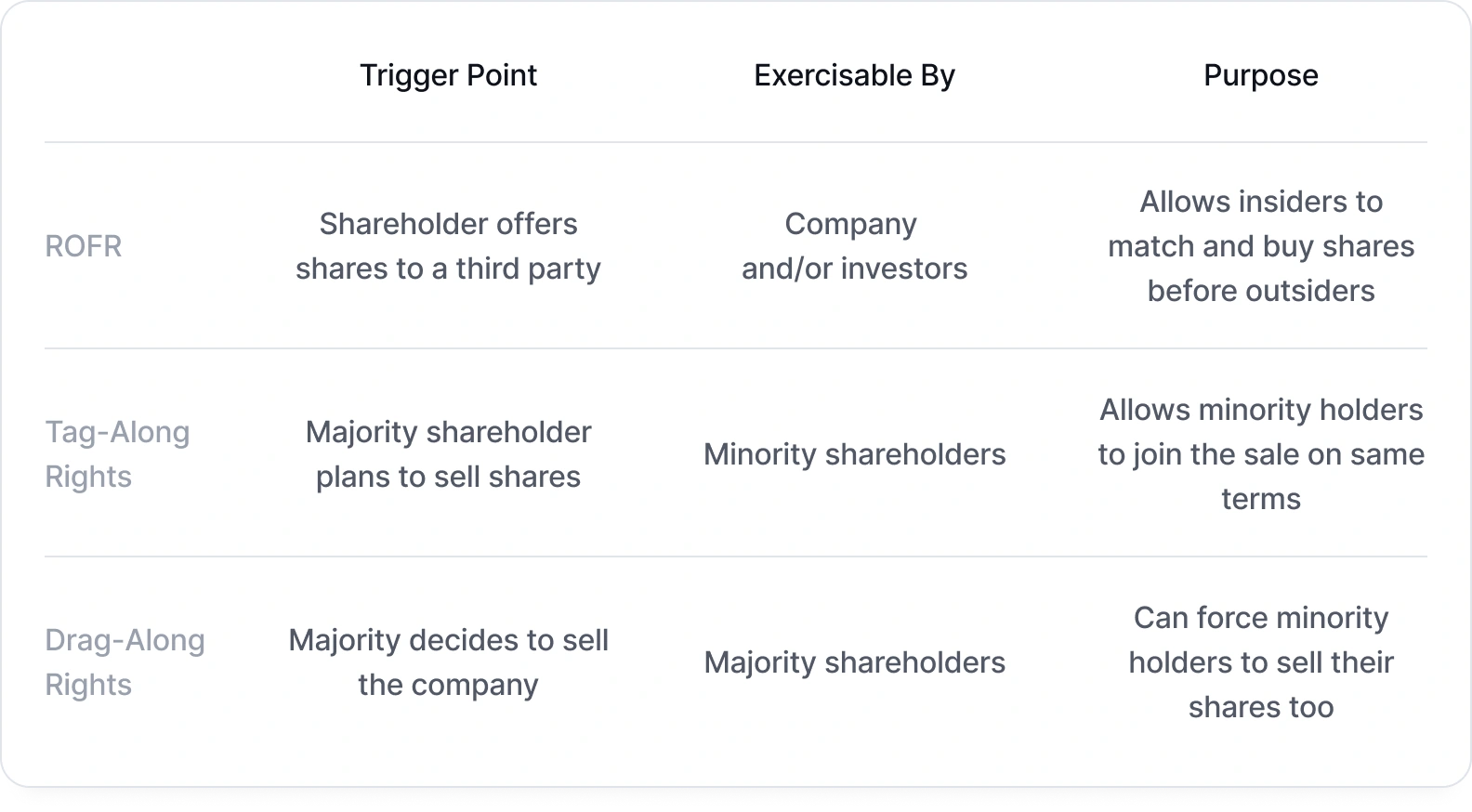
What Is a Right of First Refusal and Why Investors Ask for It
When you’re reviewing a term sheet as a startup founder, it’s easy to skip past legal-sounding clauses like the ROFR. But this one is worth your attention. ROFR might not affect your day-to-day operations, but it can shape your cap table, impact your future fundraising, and influence your ability to offer liquidity to early employees and investors. In this article, we’ll break down what ROFR means in plain terms, why it matters to investors, and what you need to know before signing off on it.
What Is a Right of First Refusal (ROFR)
A Right of First Refusal or just ROFR gives existing investors or the company itself the right to purchase shares before those shares can be sold to an outside third party. Think of it as a “first dibs” clause that kicks in when someone (usually an early employee, founder, or angel investor) wants to sell their already-issued shares. Here’s how it typically works:
- A shareholder finds a buyer willing to purchase their shares.
- Before completing the sale, the shareholder must notify the company and/or investors and offer them the chance to buy the shares on the same terms.
- If the company or investors exercise their right, they buy the shares.
- If they decline, only then can the shares be sold to the third party.
In most cases, the company has the first right, and if it passes, the right moves to existing investors.
Why Investors Want ROFR
Investors usually insist on ROFR clauses in a Stock Purchase Agreement (more about SPA in this article) because they want control over who ends up on the cap table. Without ROFR, any early employee, founder, or small shareholder could sell their stake to someone new, and investors might not have any say in that. So, ROFR helps:
- Maintain cap table stability by preventing unexpected or unwelcome shareholders.
- Preserve investor influence by avoiding dilution of decision-making power.
- Protect against strategic competitors buying into the company without consent.
- Retain control in private markets, where there’s no open exchange of shares.
For investors, ROFR is not about micromanaging share transfers. It’s about ensuring any significant ownership changes happen with full transparency and the option to act if needed.
ROFR vs. Other Share Transfer Restrictions
ROFR is one of the most commonly used mechanisms for purchasing shares. However, there are several other common alternatives used to manage secondary share transfers, each serving a slightly different purpose. Here’s their comparison:

These rights sometimes used together to create a balanced and predictable framework for future equity transactions. Still, ROFR is the most widespread and is included in many SPAs as a standard market practice.
What Founders Should Watch For
ROFR is generally standard in venture deals, but founders should pay attention to how it’s structured. Specifically:
- Scope: Does the ROFR apply to all shares, or only to certain classes of stock?
- Priority Order: Do the company and investors have equal rights, or is there an order (e.g. company first, then shareholders)?
- Timeframe: How long do the ROFR holders have to respond after being notified of a pending sale? Common periods range from 10 to 30 days.
Poorly defined ROFR clauses can delay or block secondary liquidity for early employees and founders. On the flip side, overly permissive ROFR terms can make investors nervous about lack of control. Striking the right balance is essential. You want to give the company and investors oversight — without completely locking down future liquidity opportunities.













